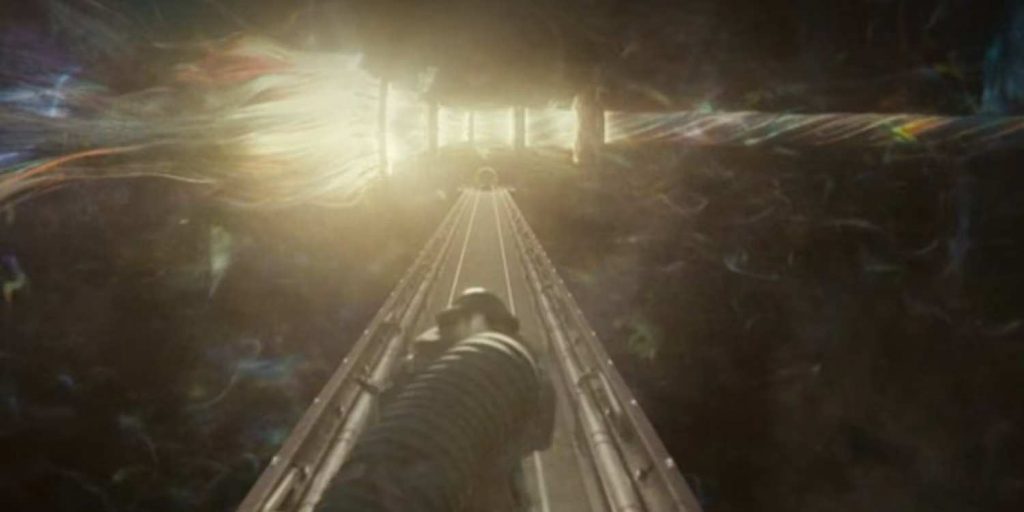In the enthralling world of “Loki” Season 2, time is not merely a concept but rather a living, breathing entity that is intimately woven into the fabric of the Marvel Cinematic Universe (MCU). Welcome to this wondrous universe! The mysterious Time Variance Authority (TVA) and the Sacred Timeline were originally presented to viewers in the first season of Tom Hiddleston‘s character “Loki,” laying the groundwork for an intricate investigation into time travel, multiverses, and the far-reaching effects of free will vs fate.
The Temporal Loom takes center stage as we delve deeper into “Loki” Season 2. Nestled inside the TVA, this complex process is the key to unlocking the MCU’s interpretation of time. Join us as tvacute on an adventure to unravel the secrets of the Temporal Loom and learn how it profoundly affected the plot of “Loki” Season 2.
What Is Temporal Loom in Loki Season 2?

Introduced in “Loki” Season 2’s opening episode, the Temporal Loom turns out to be an essential part of the TVA’s activities. The Temporal Loom is fundamentally the space where raw time is transformed into the tangible components of the timeline. Think of it as the MCU’s complicated tapestry, woven together by the intricate strands of time like a loom of fate.
Ouroboros, also referred to as O.B. (Ke Huy Quan), is the keeper of this temporal tapestry. O.B. is responsible for maintaining the Temporal Loom in optimal operating condition within the TVA. In addition to taking care of the intricate machinery, his job also entails negotiating the difficulties presented by the constantly growing multiverse.
To put it another way, the Temporal Loom is the mastermind behind the timelines that the MCU has come to know. It takes unprocessed time and turns it into a believable chronology. This procedure isn’t merely a formality; it’s the foundation of order in the midst of the multiverse’s immense turmoil.
But as Loki’s mishaps and Sylvie’s deeds cause chaos within the Temporal Loom, the story becomes increasingly convoluted. The TVA’s mastermind, He Who Remains, passes away, setting off a series of events that eventually cause timelines to diverge. Abruptly, the Temporal Loom is overburdened with an unprecedented amount of work.
Presenting the Temporal Aura Extractor, a crucial component that debuted in “Loki” Season 2. Mobius’s (Owen Wilson) use of this tool is essential to stopping Loki’s time-traveling pranks. It latches onto Loki’s temporal signature and drags him forward in time, keeping him in step with the TVA’s present. It’s an intriguing tool that further complexities the already convoluted dance of time in the Marvel Cinematic Universe.
During O.B.’s struggle with the overwhelming Temporal Loom, viewers are guided in discovering how this mechanism maintains the integrity of the Sacred Timeline. The core of the MCU’s history was unveiled in the first season of “Loki,” wherein the idea of the Sacred history was presented. The TVA cut off branches from this holy stream in order to preserve a single, well-organized timeline. This chronology was created by the TVA’s creator, He Who Remains, as a defense against the instability of the multiverse.
When the Temporal Loom was operating well, it cooperated nicely with the TVA’s trimming initiatives. It transformed unprocessed time into the tangible representation of the Sacred Timeline. From the Infinity Saga to the projects of Phases 4 and 5, every modification made by the TVA under the direction of He Who Remains helped to ensure that events in the MCU unfolded smoothly.
But things were thrown off balance in “Loki” Season 2, especially with regard to what Sylvie (Sophia Di Martino) did. Branching timelines unleashed the universe that the TVA’s careful trimming had formerly kept at bay. Concurrently, these unprocessed timelines, imbued with the multiverse’s energy, were directed through the Temporal Loom.
For the Temporal Loom, this spike in activity proved to be too much to handle. The difficult work of modifying the Loom to handle the growing number of timelines now falls to O.B., the keeper of this temporal masterpiece. Within the concept of time itself, there’s a race against time as the Temporal Loom deals with the fallout from the multiverse’s recent liberation.
Essentially, Season 2 of “Loki” is an engrossing investigation into the ways in which the multiverse affects the precarious equilibrium that the Temporal Loom maintains. By exploring the inner workings of this temporal mechanism and its effort to adjust to the unexpected nature of the universe, the show offers a unique viewpoint.
Viewers are left wondering about the ramifications of these cosmic machinations while O.B. tries to fix the Temporal Loom. Will the universe keep growing and altering the very underpinnings of reality, or will the retrofitting efforts be successful and bring order back to the MCU’s timeline?
Perhaps the answers to these queries lie only in time, or even in the Temporal Loom itself. The second season of “Loki” allows us to observe the drama as it develops, with time’s threads being both woven and unwound to create a narrative tapestry that transcends television.
Who Is Judge Gamble [Liz Carr] in Loki Season 2?